On Episode 057 of the Your Financial Pharmacist Podcast, Tim Ulbrich gets practical to talk about why automation matters when it comes to achieving your financial goals and specific ways you can automate your own financial plan. We will hear from the YFP Community about different ways that they automate their financial plan.
Mentioned on the Show
- YFP Facebook Group
- YFP Episode 008: Developing a Millionaire Mindset
- I Will Teach You To Be Rich by Ramit Sethi
- YFP Episode 048: Mo’ Money, Mo’ Problems: Making the Financial Transition to New Practitioner Life
- YFP Blog
- YFP Podcast
- YFP Episode 026: Baby Stepping Your Financial Plan – The 2 Things to Focus On First
- YFP Budget Template
- 5 Steps to Creating Your Best Budget
- Script Financial
- Public Service Loan Forgiveness Program
- Student Loan Refinancing Resources
- Ally Financial Inc.
- YFP Email
Episode Transcript
Tim Ulbrich: Hey, what’s up, everybody? Welcome to Episode 057 of the Your Financial Pharmacist podcast. Not going to lie, fired up about this episode. When it comes to automating your financial plan, it’s so obvious, so effective, so easy to implement, but yet so many people are not optimizing this to achieve their own financial goals, and that would be myself included. I’ve made some recent changes to my own financial that I’m excited to share with you in this episode when it comes to automation. Whether it’s student loans, retirement, college savings, vacation, maybe it’s saving for a down payment on a home, setting goals and carving out money in the budget and automating those goals is powerful. And I know that I’m not alone that when I say that for some time, I was feeling that when you have multiple financial priorities that are swirling around, that can easily become overwhelming, and automation helps to put these goals into action and takes the stress out of wondering whether or not they’re actually going to become reality.
So let’s jump in as we’re going to talk about different ways of automating your financial plan. And as I was preparing for this episode, I couldn’t help but think back to Episode 008, Developing a Millionaire Mindset by YFP team member Tim Church, because when I think about automation, I think that’s a key piece of developing a millionaire mindset. For those of you that have not read the book, “I Will Teach You To Be Rich” by Ramit Sethi, I’ll link to it in the show notes. It’s just a great, quick, easy read, but one of the things he talks about in that book at great extent is this idea of automation and the power of automation and taking the decision-making out of the hands and taking some of the behavioral components where we tend to make mistakes and putting in processes to help to minimize those mistakes.
So before we dig into the weeds to talk step by step about exactly how to automate your own financial goals, let’s talk about why in the world you’d want to set up an automatic process for your finances in the first place. You know, the first thing that comes to mind — we’ve talked a lot about this on the podcast, throughout various episodes leading up to here now in Episode 057, and we’ve mentioned several times that so much of personal finance is behavioral decision-making. You know, I once heard about four or five years ago, about 80% of this whole topic of personal finance comes down to behavior and about 20% is really digging into the math and the numbers and the strategy. You know, as I’ve made more mistakes, had more successes along the way that on both sides of that, I would argue 80% may not be enough. That might actually be more like 90%.
And for me, when I think about automation, I think about out-of-sight, out-of-mind because I know at the end of the day, if all of that money is just sitting in my checking account and I haven’t automated it towards the goals that I’m trying to achieve, whether that would be getting out of credit card debt, whether that would be paying down student loans fast or retirement, college savings, vacation, home buying, repairs, whatever, I know that human nature and behavior is that I’m going to spend that money — I’m going to hope that something’s left over, but more often than not, nothing’s going to be left over, and I’m going to spend that money. And when I think about automating a financial plan, I think about intentionality. I think about paying yourself first and making sure you’re then really budgeting around the rest of it rather than hoping there’s something left over at the end of the month. So first off for me is that human behavior says that we’re better off taking the decisions out of our hand because we’re prone to making mistakes when it comes to finances. You know, one of the things that gets personal here for me is I think about my own retirement savings, I’m in the state teachers’ retirement system here in Ohio, so many of you know I work as a faculty member of Northeast Ohio Medical University College of Pharmacy, been here for about nine years, and in the state teachers’ retirement system, we essentially are forced to put in a percentage of our paycheck each and every month. And that number is actually I think now approaching 14% that we are forced, no decision in our hands, to put that money into retirement. We then also have an employer match, but as I think about where I am today, nine years later with my retirement assets, I think the only that is possible is because that decision was taken out of my hands. I cannot say that I would have had the discipline, that I would have prioritized putting 15+% of my paycheck each and every month into retirement, so I think that’s a good example as we talk about areas for automation, retirement is certainly one. But again, end of the day, if that money were in my checking account and that decision wasn’t made for me, I probably wouldn’t have achieved the success I have so far as it relates to retirement saving.
And so I think that’s a humbling moment to think that the only reason, the only reason my retirement is on track and ahead of progress is because that decision was put on automatic, because that decision was taken out of my hands. Now, we know that another reason automation is important, besides a behavioral decision processes associated with it, is that for many listening, whether you’re a student, if you’re a resident, maybe you’re somebody who’s transitioned out within the last five or 10 years, regardless of where you are in that spectrum, we know that you’re facing lots of different financial goals that you’re trying to juggle. You know, in Episode 048 we interviewed Dalton Fabian in the episode called Mo’ Money Mo’ Problems: Making the Financial Transition Into New Practitioner Life, and what stuck out to me about that episode with Dalton is he, like many others transitioning from student into new practitioner life, have all of these things that are coming at you at one time, student loans, emergency fund, retirement, down payment for a home, maybe kids’ college savings, lots of different things that are coming. And how do you strategically prioritize those and achieve those? And I think as we’ll talk about here in a minute, I’ll share some examples from those within our Facebook group, having a plan in place with a budget that’s executing those and then automating that plan each and every month is the key to success there.
So let me give you some quotes from those YFP members in our Facebook group, and this is what they had to say about automation in their own financial plan.
So Brianne from the YFP Facebook group said that “I automate as much as I possibly can, including savings, on the first of the month, all fixed bills and student loans as well. To me, that makes it easier to budget because I only ‘feel’ like I have whatever is left over rather than my whole paycheck.” I think there’s such wisdom there from the sense that when you pay yourself first, first of the month, you automate paying yourself towards your goals, all of a sudden, you get used to living on the rest rather than living up to your full income and hoping you can fund your goals after the fact.
YFP team member Tim Church says, “Love automating as much as possible — bills, everything, all bills, student loan payments, HSA contributions and TSP contributions.” That’s his retirement component with the VA. So when it comes to automation for Tim Church, he’s automating as much as possible.
Matt from the Facebook group says that, “I automate most of it but still need help for the leftover. I auto-deposit 529 college savings accounts every 15 days, one for each kid, auto-deduct 401k every check, have a separate target date fund that comes out once a month. I pay my bills as soon as I get them from the mailbox because I like to actually see the balances, which is the only reason they aren’t on autopay.” And I think that’s an interesting point, Matt, that maybe some may say, you know what, I like to not necessarily automate all of my bills — maybe you do, maybe you don’t — but for Matt, he looks at that and says, you know what, if I get my bill, whether it’s water, sewer, cell phone, whatever it be, that he likes to see the balance in the process of it to make sure that everything is accurate.
Brian says that “We automate 401k contributions and savings account for sinking funds.” We’ll talk about sinking funds a little bit upcoming in this episode. “However, we don’t currently automate 529 contributions or IRA contributions. Still not sure which approach is better, but I do find that not automating everything actually requires you to think about it every month as opposed to a set-it-and-forget-it mindset. I think there may be some benefit to that, depending on how you’re wired.” Building off what Matt said, Brian says, you know what, for some things, set-it-and-forget-it is great when you think about 401k contributions, 529, IRA contributions, but for some other things, maybe not so much if you like to have that reminder of exactly what you’re doing.
And Brandon, the last one from our YFP Facebook group, says so when we don’t see it, the importance for him of automation is that “When we don’t see it in the checking, then we don’t spend it.” And Jess and I have noticed the same exact thing. First day of the month comes, auto-withdraw to a separate savings account, different funds, I’ll talk about those here in a minute, boom. Whatever’s left over, that becomes our monthly spending in our budget. But we have already funded our goals because we know the reality that if it sits in our checking account, we’re going to end up spending it. So if it sits in our checking account, we’re going to end up spending it.
So let’s now move into where exactly to get started with this process. We’ve heard from those in the YFP Facebook group. And if you’re not yet a part of that community, you’re missing out — great conversations, come on over to the YFP Facebook group, we’d love to have you a part of that group and a part of the conversation.
So where do you get started? For me, it comes down to two major things: goal-setting and budgeting. Both of which we’ve talked about in the YFP podcast as well on the YFP blog, and if you’ve heard us speak at a live event, you know for us, goal-setting and budgeting are absolutely critical to having a solid financial plan. Now, let’s take a step — and I think goal-setting can be an overwhelming process, but just like you were taught in pharmacy school, when it comes to setting your financial goals, they have to specific. They have to be measurable. They have to be action-oriented. They have to be realistic. They have to be time-oriented. You’ve heard of SMART goals before, right? And they also, in our opinion, they have to have a “why” behind them. What is the motivation for why you’re going to achieve that goal? Now, you all know as you’re working with patients, maybe you’re working with a diabetic patient, trying to get them to make a lifestyle change, achieve an A1C goal, whatever you’re doing, it’s the same thing when we talk about our financial plan. We have to put behavioral pieces, we have to make conscious choices, and we have to have those motivations, specifics, that measurable component, the time-oriented piece, we’re going to have a higher likelihood of achieving that goal. So whether it’s helping a patient with their diabetes or helping yourself with your own financial plan, goal-setting is a critical part. And the other piece of this, which I’ll mention here in a minute, is that when you work on your monthly budget, your monthly budget is simply an execution of your goals.
So for those of you that are listening to this — and I know many of you are sitting here right now, thinking, I feel so overwhelmed with all of these different competing priorities that are out there. I’ve mentioned several of them already. We’ve talked about emergency funds before, we’ve talked about getting credit card paid off before, we’ve talked about making sure you have a solid retirement savings plan in place. What about your student loans and kids college? And the list goes on and on. And you have to first put all of those things on the table and say, OK, I have all of these goals, all of these competing priorities, which of these are the ones that I’m going to go after first? Maybe you’re somebody that says, you know, I’m going to go all in on this one goal, and then I’m going to move to the next one because I know that if I tried to focus on many different things, I tend to get overwhelmed and really just end up spinning my wheels. So some of you may say, you know what, I’ve got credit card debt, and I’m going to go all in on my credit card, knock that out, and then I’m going to move on to something else. Now, others of you listening may say, you know what, I think I can handle more than one goal at the same time, so now I need to look at the top two or three or four goals to make sure that I’m achieving these things in the right order. And I would reference you back to Episode 026, we talked about baby stepping into a financial plan, specifically around emergency funds and credit card debt as the two areas that you want to — more often than not — focus on first. So if you’re hearing this thinking about, I don’t even know where to get started, go back to Episode 026, Baby Stepping into a Financial Plan, I think that will help you get along the path to coming up with how you could prioritize these goals.
So you lay out all of the goals on your paper, and you start to prioritize them. And I literally like to put a number by them. So maybe it’s credit card debt, 1. Emergency fund, 2. Student loans, 3. Whatever the goals that you’re working on. Then you move into the budgeting process. Now, I’m not going to go into detail here on this episode about the budgeting process because we’ve chronicled it before on previous episodes. I’d point you — we have a great budgeting resource at YourFinancialPharmacist.com/budget. Again, that’s YourFinancialPharmacist.com/budget where we have a template, an Excel template, that will walk you through step-by-step how to create a zero-based budget to achieve those goals that we just discussed. I also would reference you to, we have a blog post out there at YourFinancialPharmacist.com, “The Five Steps to Creating Your Best Budget.” So both of those resources we’ll link to those in the show notes, I think will be a great starting point to make sure you can execute your goals through that monthly zero-based budgeting process. Now, if you take the time to sit down and do a zero-based budget and really work through this process, what you will come to at the end of that budgeting process is you’ll determine your total take-home pay, you’ll determine your necessary expenses, you’ll determine your discretionary or nice-to-have expenses, and then you’ll come up with a number that is determined to be your disposable income. Essentially, what amount of money do you have left over each and every month, each and every pay period, that you can allocate towards your financial goal. So if we did the goal-setting process and then we worked through the budgeting process, you may say, OK, at the end of the month, I’ve got $1,000 left over after I pay all my necessary and discretionary expenses. I’ve got $1,000 left over, and here are the three goals that I want to work on. Boom. That’s where the automation begins to happen. So if you were to say, you know what, I’ve got $1,000 left over, and I want to start doing two things. I want to pay off my credit card debt, and I want to build an emergency fund. Maybe you take that $1,000, auto-withdraw the first of the month $500 goes to your credit card bill as one example, $500 goes into a long-term savings account to save for an emergency fund. That decision is now out of your hands, you’ve identified your goals, you’ve set the budget, and now your goals are on automatic. And that provides an incredible amount of peace and confidence when it comes to your financial plan.
Sponsor: So two big pieces to get started here: setting those goals and then getting that budgeting piece in place so you know what that disposable income is, and you know exactly where you’re going to put that money. Now, once we have those two pieces in place, we can then begin to think about the actual processes for automation, and we’ll talk more specifically about where you can put the money in different areas when it comes to automating your financial plan.
I want to take a brief moment before we jump into the second part of the show and to highlight today’s sponsor of the Your Financial Pharmacist podcast, which is Script Financial. Now, you’ve heard us talk about Script Financial before on the show. YFP team member Tim Baker, who’s also a certified fee-only financial planner is owner of Script Financial. Now, Script Financial comes with my highest recommendation. Jess and I use Tim Baker and his services through Script Financial, and I can advocate for the planning services that he provides and the value of fee-only financial planning advice, meaning that when I’m paying Tim for his services, I am paying him directly for his advice and to help Jess and I with our financial plan. I’m not paying him for commissions, I am not paying him for products or services that may ultimately cloud or bias the advice that he’s giving me. So Script Financial specifically works with pharmacy clients. So if you’re somebody who’s overwhelmed with student loans or maybe you’re confused about how to invest and adequately save for retirement, or maybe you’re frustrated with just the overall progress of your financial plan, I would highly recommend Tim Baker and the services that he’s offering over at Script Financial. You can learn more today by going over to ScriptFinancial.com. Again, that’s ScriptFinancial.com.
Tim Ulbrich: OK, welcome back. In the second half of this episode, we’re going to talk about the areas specifically that you can consider for automation, which builds upon the discussion we talked about in the first half of the episode of the goals that you’re setting. And then I will walk you through step-by-step exactly how I think you can set up your automation of your financial plan and more specifically, I’ll show you exactly what Jess and I are doing with our own financial plan when it comes to automation.
So let’s talk about the different areas that you can set up for automation. And lots of these came from personal experience, from Tim and Tim — I know that they do also, YFP team members Tim Baker and Tim Church, as well as what I’ve heard from other pharmacists and those within the YFP Facebook group. Now, one we already mentioned in the beginning comments from the YFP Facebook group, areas of automation of course would be your monthly bills. So this, for me, is more out of convenience than anything else, so I don’t look at automating my monthly bills as being a point of, say, strategy as I do that it’s one less thing that I need to work on in terms of writing a check, making sure that that’s all set and ready to go. And that’s automatically happening each and every month.
Now, to build on what Matt and Brian said in the earlier comments, I, too, am someone that does not automate all of my monthly bills. And the reason is when it comes to those bills that I know fluctuate — water, for example, could be cell phone usage if there’s potentially overage charges — any bill that I know may have variance based on usage, I like to see that and track that and to be able to identify any discrepancies that may occur. Now, if I have bills that I know are the same each and every month and that’s not necessarily going to change, then for me, automation on bills really becomes a point of convenience. So area No.1, of course, would be bills.
Area No. 2 is student loans. And one of the things that Brandon said in our Facebook group is that automation is a must when it comes to student loans if you’re going for the loan forgiveness program. There, he’s referring to the Public Service Loan Forgiveness Program. That way, you are for sure making on-time payments. And Brandon, I think that’s great wisdom there because when it comes to Public Service Loan Forgiveness — and really, in my opinion, any student loan payment — you certainly do not want to have delayed payments for a series of reasons. One, if you’re in Public Service Loan Forgiveness, those then will not be qualifying payments. And then otherwise, you just don’t want delayed payments to be impacting your credit score, your credit rating in any significant way. So I think automation with student loans is great. That’s one where I’m thinking a little bit more about strategy, making sure that I have a plan, I’ve worked through my goals, I’ve worked through the budget, I’ve determined that this much each and every month, I can put toward my student loans. Boom. I’m putting that on automation, and I’m paying my loan servicing company on-time, right out of my paycheck, first thing before I hope that I have that money left over at the end of the month. The other thing I think that’s important to note with student loans and automation is that when it comes to refinancing your student loans, you’ll notice that the various quotes that you’ll get from the refinance lenders, those private companies, is they will typically give you a quote with the assumption that they’re giving you some discount to automate those payments, to set up the autopay on that. So if you do not automate those payments, then you may not get that quote that they’re advertising. So if you need more information on refinancing or have questions about what I just said there, head on over to YourFinancialPharmacist.com/refinance, we have a great page, great resources about where to get started with refinancing, who it’s for, who it’s not for, and if you’re ready to get started, companies that you can pull quotes from that we recommend and that our YFP community gets cash bonuses for.
So area No. 1 was bills, area No. 2 was student loans, area No. 3, for me, is college savings. So here, I’m thinking about 529 plans. And similar to retirement savings, which would be the fourth area, whether that’s 401k’s, 403b’s, Roth IRAs, whatever that would be, now, we’re really talking about automating the savings for the future. So you may look and say, OK, I’ve got three children. I’ve determined that I really want to start saving for kids’ college, and I’m going to start at $50 a month, $100 a month, $150 bucks a month. And you can set up a 529 plan where not only does it auto-withdraw the money each and every month, which then also gives you a deduction on your state income taxes, but it also then will auto-determine where your money’s going in terms of the allocation. So example, for my Ohio 529 plan for my kids, I have I think it’s $100-150 per month that goes toward each kid. And then from there, that $100 or $150 is being distributed in five different investing funds that I have set up automatically. So not only is the money going into the account, but then it’s automatically being invested in those accounts. When it comes to retirement savings, Brandon from the Facebook group says, “I have my retirement set to take out 15% with the employer matching 5%. And what we know from some of the studies that are out there is that the average automatic deferral rate for an employee is only about 6%. And we talked on previous episodes about probably needing closer to 15-20%, depending on your individual situation, needing 15-20% over the course of your career to achieve your long-term savings goals. So 6% is probably not going to cut it. And I think what Brandon’s doing with 15% automatic withdrawal, out-of-sight, out-of-mind, employer matching 5%, obviously then he’s getting closer to that 20% or is getting to that 20% goal. And I think this is an important one because you think about the evolution of retirement savings over time. What used to be more of a traditional pension model is now almost — for most listening — is probably 100% on your back in terms of the responsibility, whether it’s a 401k, a 403b, a Roth IRA, some combination thereof. We have to take the ownership and the work, and I think automation of retirement savings is a great one.
Now, the last one that I want to talk about, which I think is a really tangible for the listeners to get started today is setting up a series of what we call sinking funds. Now, these are established based on the set of goals that you have. So examples of sinking funds that I would throw out there could be an emergency fund, maybe it’s vacation, it could be setting up a sinking fund for purchasing a car or a car repair fund. It could be a gifts fun, so whether that’s birthday gifts throughout the year, Mother’s Day, Father’s Day, Christmas gifts, etc. It could be a sinking fund for a home down payment. Maybe it’s a separate sinking fund for home repairs. Maybe if you’re somebody who has significant medical expenses, you have a separate sinking fund for medical expenses. So what I’m trying to drive home here, the point with sinking funds, is that once you determine the areas and the priorities, instead of having all of this money in one lump sum in a checking or savings account, you start to separate out these funds into separate accounts, and you name them for specifically the goal that you’re trying to achieve: emergency fund, vacation, car, gifts, down payment, home repairs, medical expenses, etc. And what we know when it comes to behavioral finance is that once you name a fund something, you’re more likely to achieve the goal because it’s not in a general pot or pool of money that you lose track of in terms of where it’s going, and then obviously, you’re more likely to spend that money.
So what does this actually look like? And I mentioned before that Tim Baker, owner of Script Financial, helped Jess and I get this set up just a few months. We actually have several of these funds that are set up with an Ally, Ally.com, which is one example that you can use, many others you could do, even with your own banking institution. And so once we set a prioritized list of our goals with the dollar amounts, which, of course, came from the goal setting and the budgeting process, we then — after the budgeting process — we came up with and said, OK, each and every month, we have this total amount of discretionary, disposable income that we can assign to our goals. We then listed our goals out on paper and then based on that total dollar amount, we then said, OK, each and every month, we’re going to put x dollars toward giving, x dollars toward gifts, x dollars toward vacation, x dollars toward home maintenance. And so then what happens is each and every month on the first of the month, those dollar amounts are auto-withdrawn from our paycheck, and the rest of our income becomes what we spend for the rest of the month on groceries and all other expenses for the month out of our day-to-day checking.
So for me, there’s four basic steps here. Is No. 1, Step No. 1 is you have to have a list of prioritized goals with dollar amounts attached to them. No. 2 is you have to be able to know what that disposable income is that you have available each and every month so you can assign those dollar amounts to the goals that you’ve listed out. No. 3 is you then need to create and set up a long-term savings sinking funds account. So for us, what this looked like and it only took about 10-15 minutes for us to set this up is if I log into my Ally.com account, I have an interest checking account, which is basically the base account that we use where we need to spend money out of and then have a debit card if I need to use it. And then I have a series of separate sub-accounts. I have an emergency fund account, I have a giving account, I have a gifts account, a vacation account, and then we have a home maintenance account. And then Step No. 4 is you put those on auto-withdraw. So once you identify the list of goals with the dollar amounts, once you set up the separate sinking funds and you know exactly how much you’re going to put towards those, then you can set up the auto-withdraw so your paycheck into your checking account, once it hits your checking account, it’s an auto-withdrawal into your long-term sinking funds and those sinking accounts.
So that’s the process that we use to put our financial plan on automation, and as I began the episode and talked about why, for us, it’s about the intentionality. It’s about knowing that when it comes — when push comes to shove, if that money’s just sitting in our checking account, more likely than not going to spend it. So it puts our financial goals on automatic, and it allows us to be on the path towards achieving those goals each and every month.
One last point I would make here is that for me, the importance here of automation also comes to an important point of having accountability throughout this process, whether that’s a spouse or significant other, whether that’s a friend, whether that’s a financial planner, somebody that can keep you accountable each and every month, each and every quarter, whatever it be, to check in and say, Hey, we said these were the goals. What’s changed? What’s different? How is the progress going in terms of achieving those goals?
So I hope this episode has been hopefully a moment of inspiration, maybe even empowerment to say, think about your goals, what are those goals, how much do you want to put toward those goals each and every month, what’s the prioritization of those goals? And then setting up the sinking fund accounts to automate those goals each and every month.
So as always, thank you so much for joining us on today’s episode of the Your Financial Pharmacist podcast. We appreciate you listening each and every week, and as always, we would welcome any ideas that you have for future episodes. So you can shoot us an email at [email protected] or jump on over to the YFP Facebook group, and we would love to hear your ideas and input for future episodes of the Your Financial Pharmacist podcast. That’s for today’s episode. Have a great rest of your week.
Join the YFP Community!
Recent Posts
[pt_view id=”f651872qnv”]

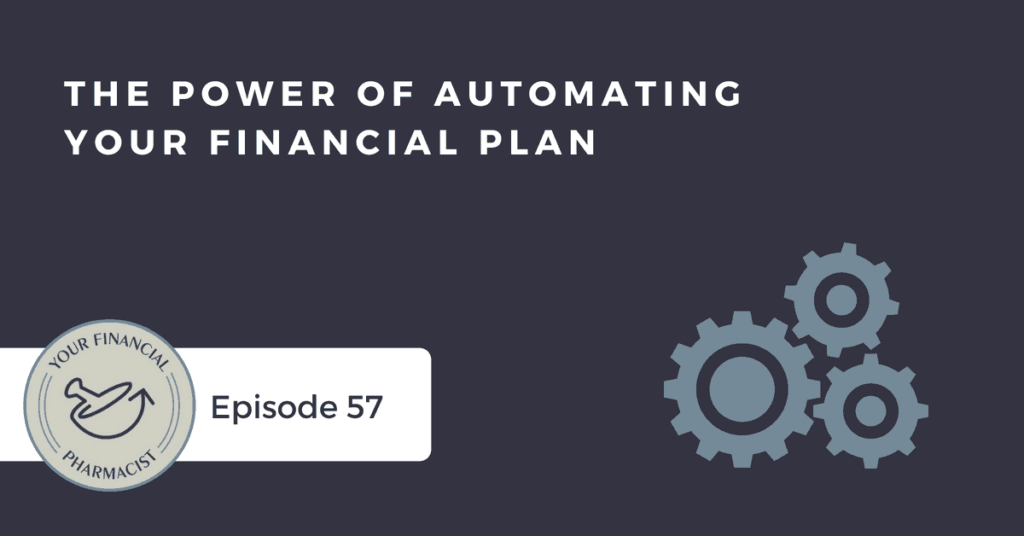



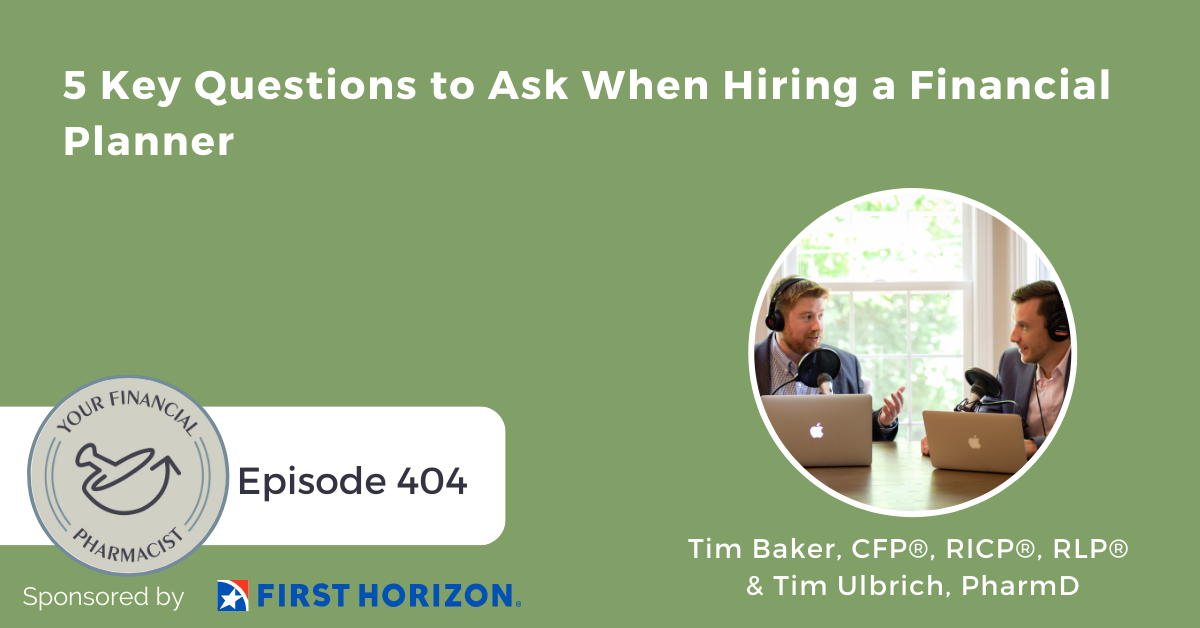
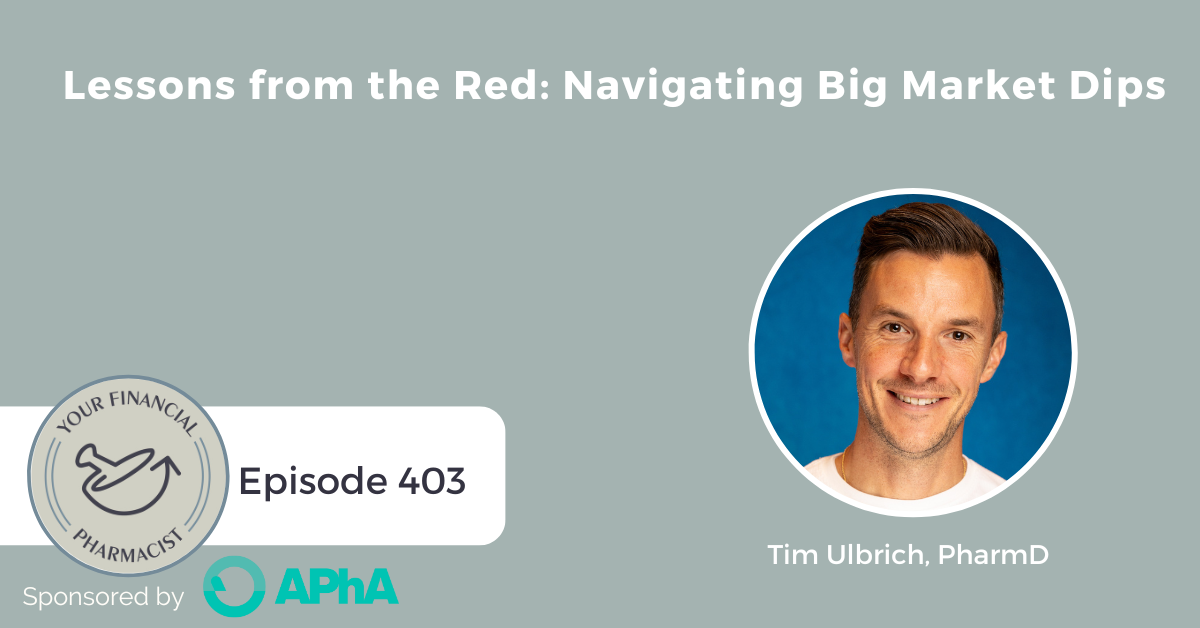
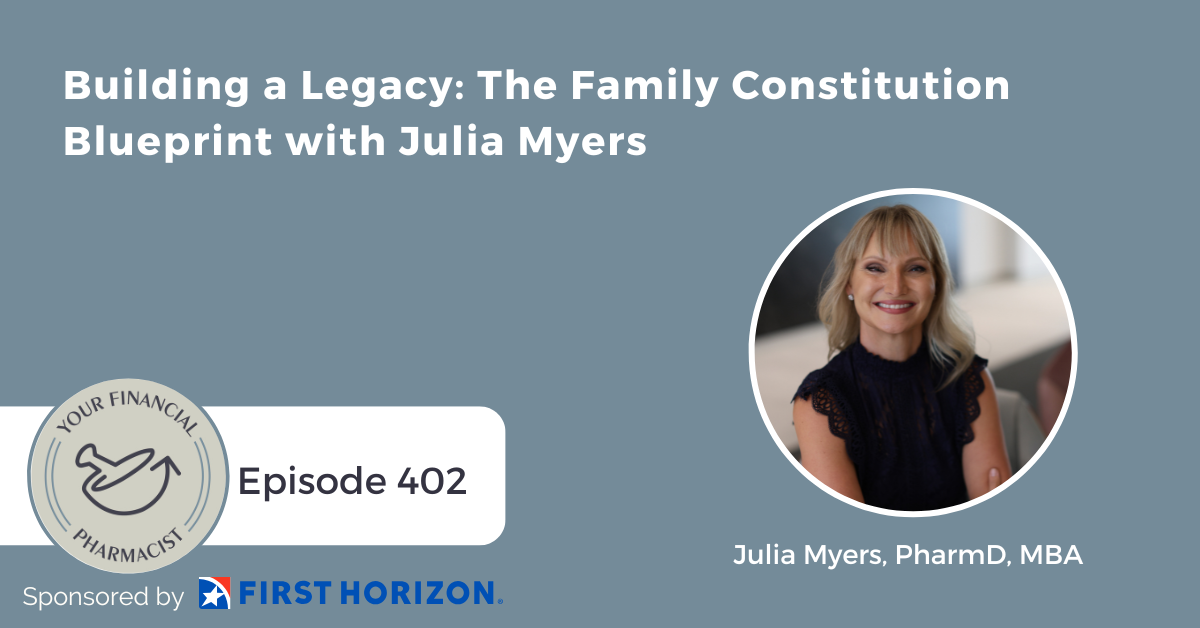
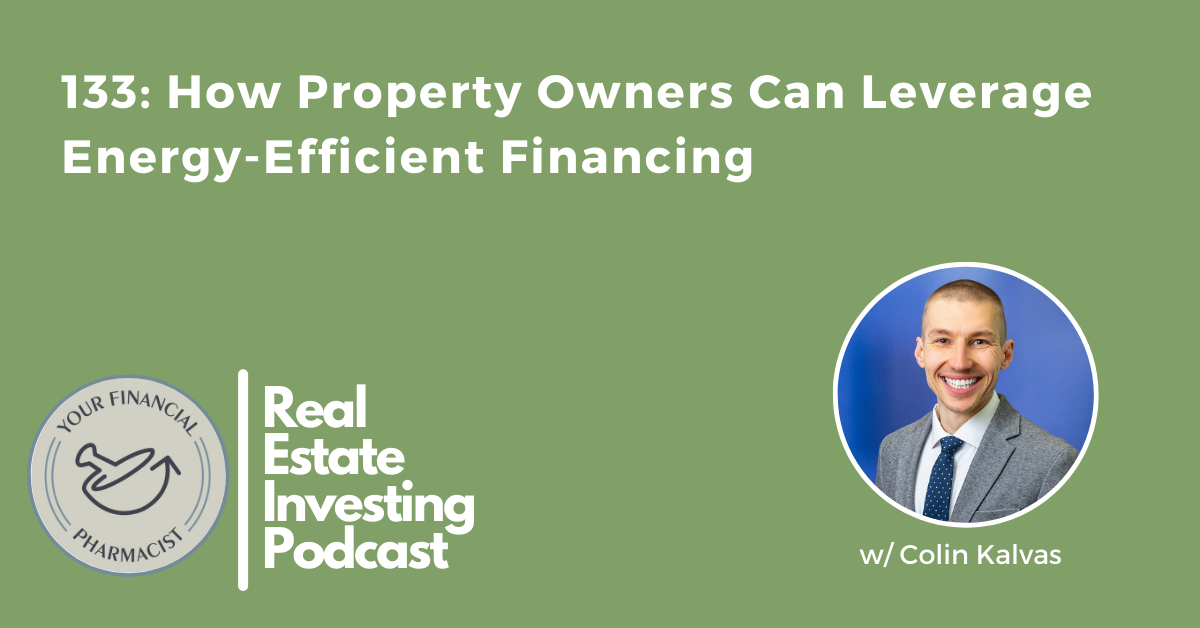



4 thoughts on “YFP 057: The Power of Automating Your Financial Plan”